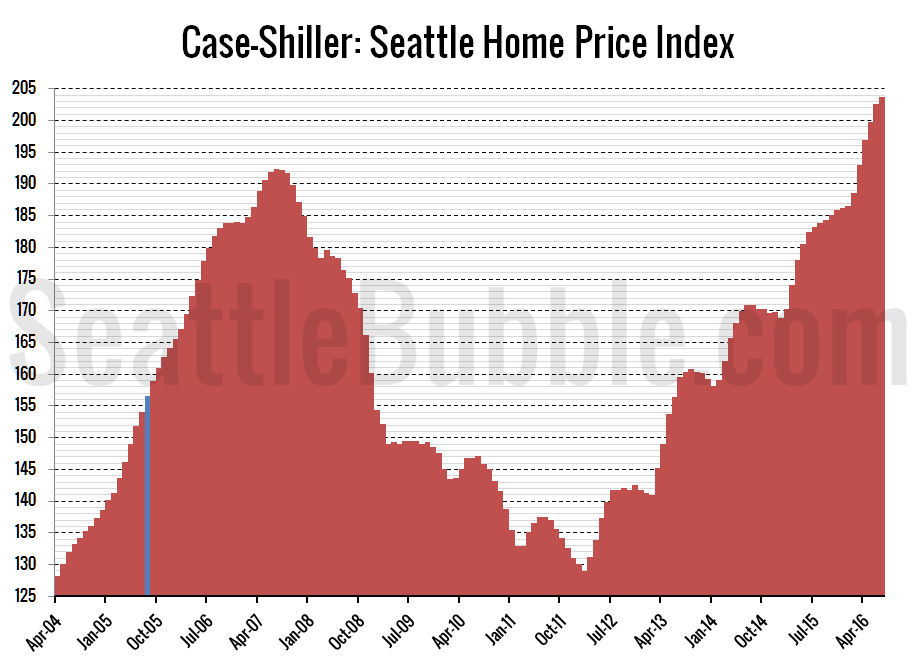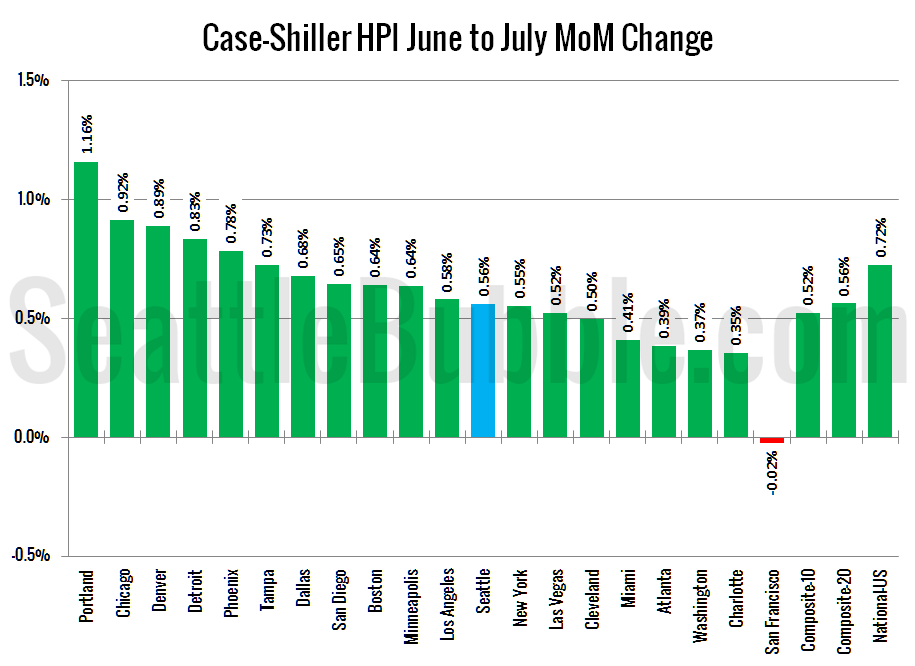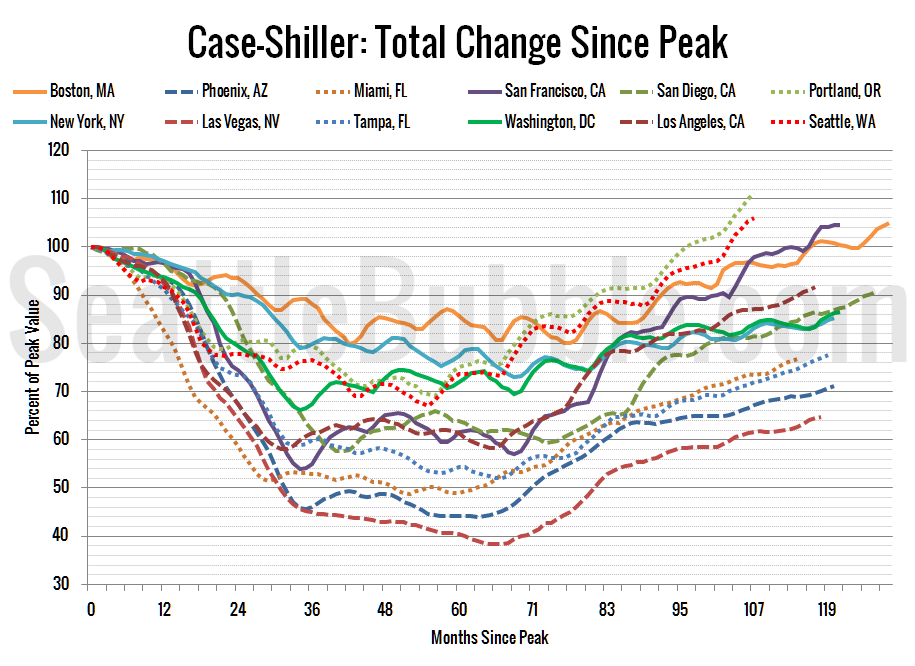Let’s have a look at the latest data from the Case-Shiller Home Price Index. According to July data that was released this morning, Seattle-area home prices were:
Up 0.6 percent June to July
Up 11.2 percent YOY.
Up 5.9 percent from the July 2007 peak
Over the same period last year prices were up 0.4 percent month-over-month and year-over-year prices were up 7.2 percent.
The Seattle area’s Case-Shiller home price index hit yet another new all-time high in July, and turned in stronger numbers than a year ago across the board. Again. This matches with the July data we’ve already seen from public records and NWMLS.
Here’s a Tableau Public interactive graph of the year-over-year change for all twenty Case-Shiller-tracked cities. Check and un-check the boxes on the right to modify which cities are showing:
Seattle’s rank for month-over-month changes was at #1 in March and April, dropped to #4 in May, moved up to #2 in June, and fell all the way to #12 in July.
Hit the jump for the rest of our monthly Case-Shiller charts, including the interactive chart of raw index data for all 20 metro areas.
In July, there was still just one of the twenty Case-Shiller-tracked metro areas that gained more year-over-year than Seattle (the same as February through June):
- Portland at +12.4%
The Northwest: Still literally the envy of other states.
Six cities hit new all-time highs in July: Boston, Seattle, Charlotte, Denver, Portland, and Dallas. San Francisco had been hitting new highs in recent months, but dropped slightly month-to-month in July.
Eighteen metro areas gained less than Seattle as of July: Denver, Dallas, Tampa, Miami, San Diego, San Francisco, Los Angeles, Las Vegas, Detroit, Charlotte, Atlanta, Phoenix, Minneapolis, Boston, Chicago, Cleveland, Washington, and New York.
Here’s the interactive chart of the raw HPI for all twenty metro areas through July.
Here’s an update to the peak-decline graph, inspired by a graph created by reader CrystalBall. This chart takes the twelve metro areas whose peak index was greater than 175, and tracks how far they have fallen so far from their peak. The horizontal axis shows the total number of months since each individual city peaked.
In the 108 months since the price peak in Seattle prices are up 5.9 percent.
Lastly, let’s see how Seattle’s current prices compare to the previous bubble inflation and subsequent burst. Note that this chart does not adjust for inflation.
Check back tomorrow for our monthly look at Case-Shiller data for Seattle’s price tiers.
(Home Price Indices, Standard & Poor’s, 2016-09-27)


